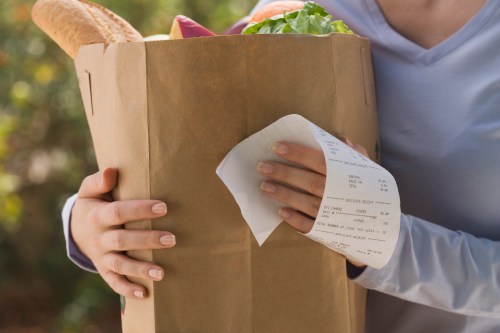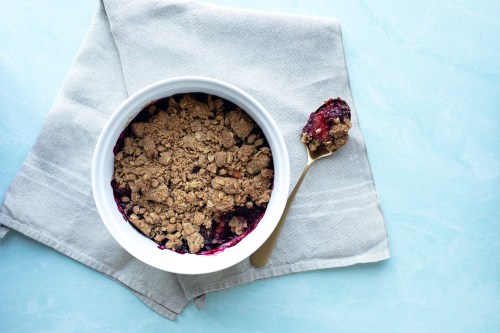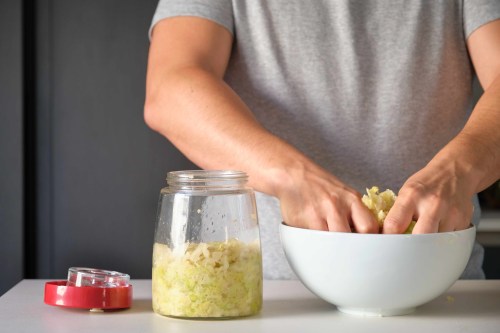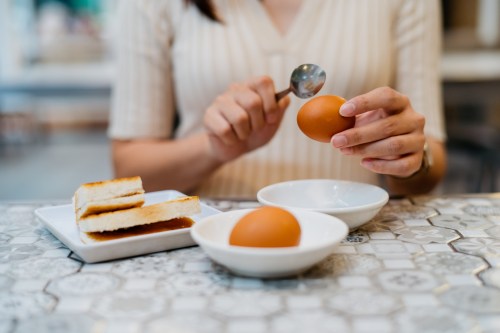Food Budget Out of Control? Here’s How To Maximize Your Next Grocery Trip
From 'sell-by' dates to keeping food fresh, experts give their top tips to stretch your food just a little bit further.

If it feels like you spend more and more money on groceries each month, you’re not imagining things. There’s been a 0.8 percent increase in food prices from December 2024 to January 2025, according to the U.S. Department of Agriculture (USDA).
With the recent bird flu outbreak causing egg prices to soar and talks of tariffs threatening to drive up food costs as well, the last thing you want to do is spend hundreds of dollars on food and then throw it out because you didn’t eat it in time. (Guilty!)
But, I have good news: There are ways to keep your foods fresher for longer, while also increasing time between grocery trips. I chatted with experts who shared their top tips—including what to know about your food’s “sell by” and “use by” dates—so you can make the most informed decisions, like when you actually should toss that salad kit in the back of your fridge.
What does a “sell-by” date on your food mean?
“A sell-by date is a label communicated from the food manufacturer to the grocery retailer letting them know how long they should keep the product on the shelves for display,” explains Bryan Quoc Le, PhD, a certified food scientist and author of 150 Food Science Questions Answered.
Sell-by, use-by, or best-by dates (more on those below) are either determined by using historical data on similar products with similar chemical composition, or they’re tested in a lab, according to Quoc Le.
Two types of tests are used: “One is a standard shelf-life testing method, where the product is kept in the same condition as when it's stored, so either at room temperature, in the refrigerator, or in the freezer,” Quoc Le says. “Every few weeks, the food is tested for microorganisms, taste, texture, and other properties.”
The second type of test used is called accelerated shelf-life testing. Here, the food product is kept at much higher temperatures to speed up the damage that can occur, per Quoc Le. “Scientists will then back-calculate how the food product will last on the shelves using this data, which allows food manufacturers to determine if a food product has several years of shelf life using a test that occurs within only a few weeks,” he says.
Typically, food is still good past the sell-by date, as this date guides store shelf life rather than consumer safety, according to Jessica Gavin, a certified food and culinary scientist.
“None of these dates are safety indicators, except in specific regulated cases, like infant formula,” Gavin says. “These labels are determined by various factors, including storage conditions, product characteristics, and packaging to ensure the product remains at its best for consumption for as long as possible.”
What does a “use-by” date on your food mean?
“A best-by or use-by date refers to the date when the food product will maintain maximum freshness,” Quoc Le says. “Past this date, the food will begin to lose flavor or break down in terms of its texture.”
According to Thomas Gremillion, director of food policy at the Consumer Federation of America, there have been proposals to standardize the language around when an expiration date signifies a quality concern versus a safety concern. But nothing concrete has come out of these suggestions yet.
How can you tell if food is still safe to consume?
“The food companies are the ones that inform consumers about expiration dates,” Gremillion says. “I think the food industry would actually like there to be clearer rules about the language and standard practices they use for expiration dates, but we may not get any of that because of the recent 10-to-1 Executive Order.” (FYI: This Executive Order states that whenever an agency announces a new rule, regulation, or guidance, it must cut at least 10 existing rules, regulations, or guidance documents.)
So, for now, a general rule of thumb to determine if a food item is spoiled is to check it for any unusual smells, flavors, or changes in texture, according to Gavin. “These are all signs it shouldn't be eaten due to spoilage bacteria,” she says.
However, many foods are still edible after its best-by or use-by date, Quoc Le says. “For example, many fruits and vegetables are more resistant to growth of pathogens if they have not been contaminated, so most of the issue will be in terms of flavor or texture. But they are still safe to eat,” he says.
For animal-based products like dairy, meat, or eggs, on the other hand, a sell-by or best-by date is fairly close to when you should consume the food, “otherwise these foods can breed pathogens that can cause illness,” Quoc Le says.
Ultimately, if you follow the package storage instructions and practice safe food handling, you’ll maintain a food’s quality and safety, per Gavin.
5 tips to maximize your grocery budget
Americans waste a tremendous amount of food, according to Gremillion, but “effective federal government policy can help,” he says. Below, the experts share their top suggestions for making your grocery budget go further than ever before without needing to throw anything away prematurely.
1. Plan your meals
Take inventory of your fridge and pantry before you go grocery shopping, Gavin advises. It’s easy to go to the store without a list and walk up and down each and every aisle, impulse buying whatever strikes your fancy at the moment. But Gavin’s tip ensures you only buy what you need, including bulk shelf-stable items and seasonal produce.
“People who do food shopping with a list and buy little else spend much less money than those who decide what to buy when they get to the food market,” Gremillion says. “The annual savings could easily be hundreds of dollars.”
2. Use the “first in, first out” method
A common restaurant kitchen practice, this ensures your older items get used first. Gavin likes to label products with the date purchased to extend shelf life and minimize waste. “I also freeze leftovers, like chopped vegetables and proteins, to use later in dishes, preventing waste.,” says Gavin. “Proper storage is key to maintaining freshness.”
3. Do your research
Quoc Le suggests looking up the actual shelf life of foods based on recommendations from the USDA, as opposed to relying solely on the best-by or sell-by date. “Again, many foods are still edible even after these dates, but it's on a case-by-case basis,” he says.
4. Eat out less often
If watching your coworkers order lunch from that delicious Mexican restaurant next door gives you a severe case of FOMO, we get it. But brown bagging your lunch each day not only saves you money, but prevents the food in your fridge from going untouched, according to Gremillion.
The same goes for going out to dinner—”committing to eating out just one fewer time each month is a way to save money without sacrificing your lifestyle,” Gremillion says. Plus eating at home provides a chance to try out more recipes.
5. Double your recipes
“Next time you make a family favorite, double the recipe and freeze the leftovers for another day,” Gremillion says. “That way, you can get two meals out of one and use the ingredients more efficiently with less waste.”








